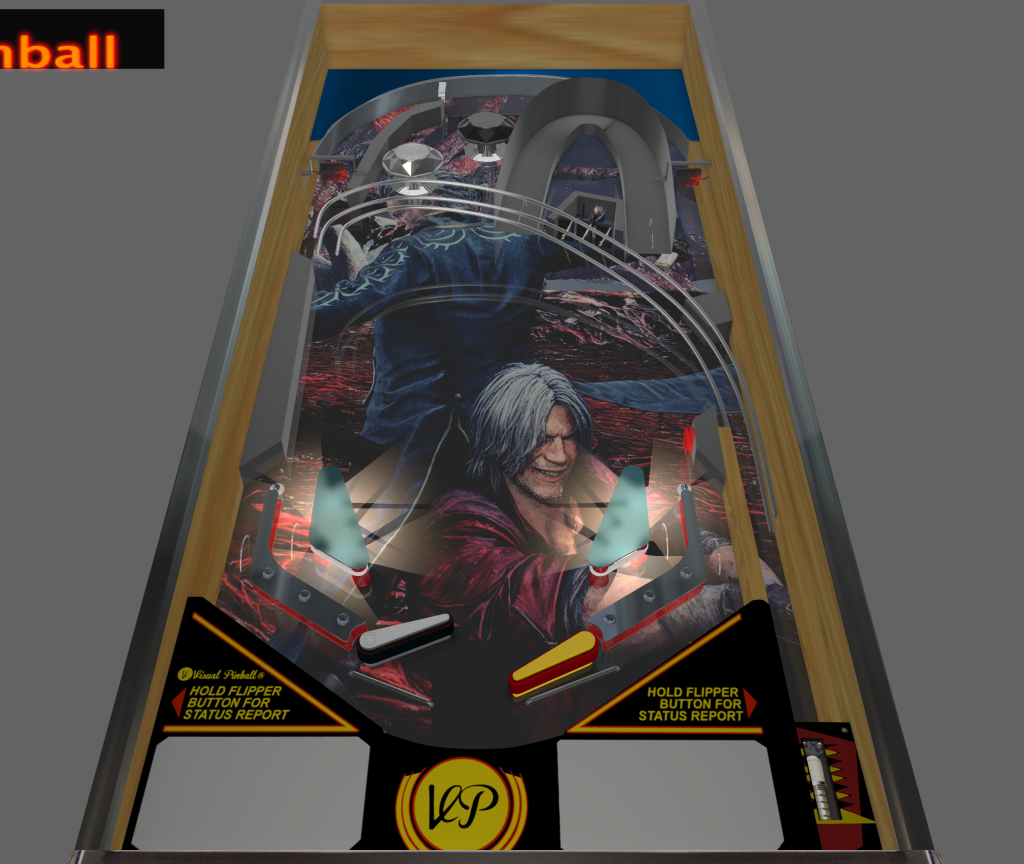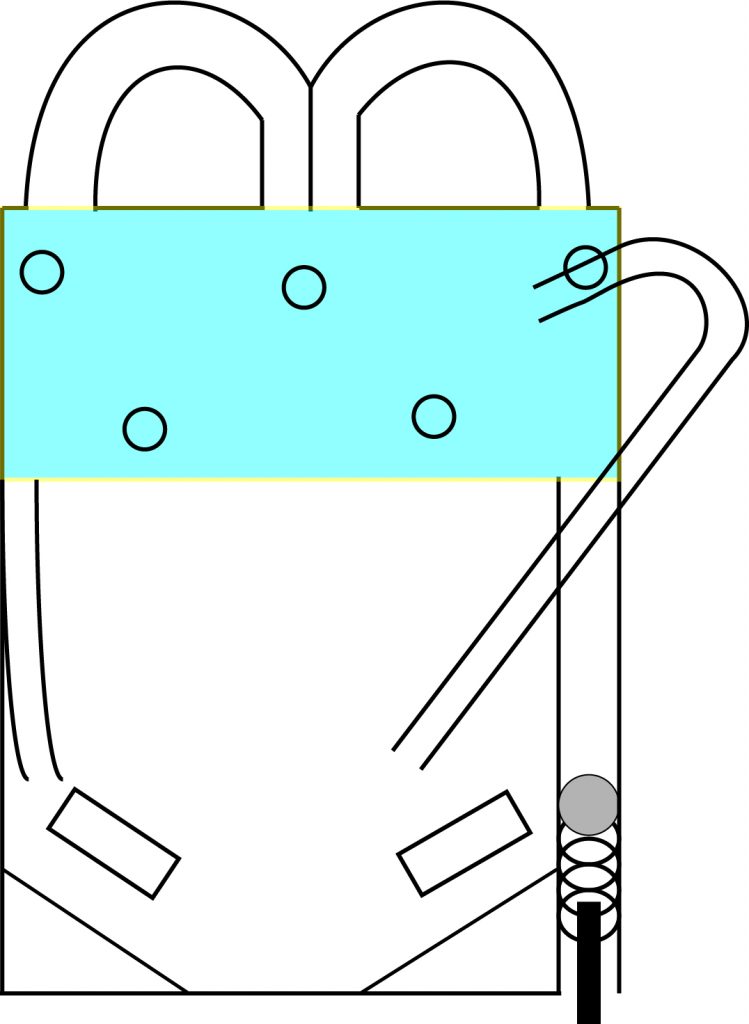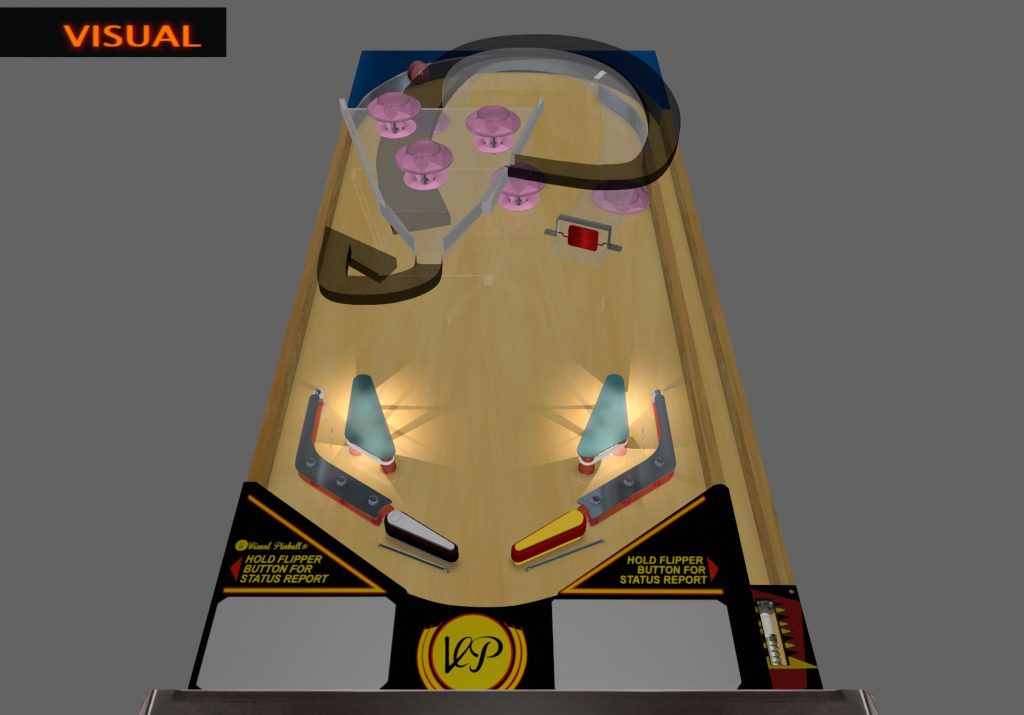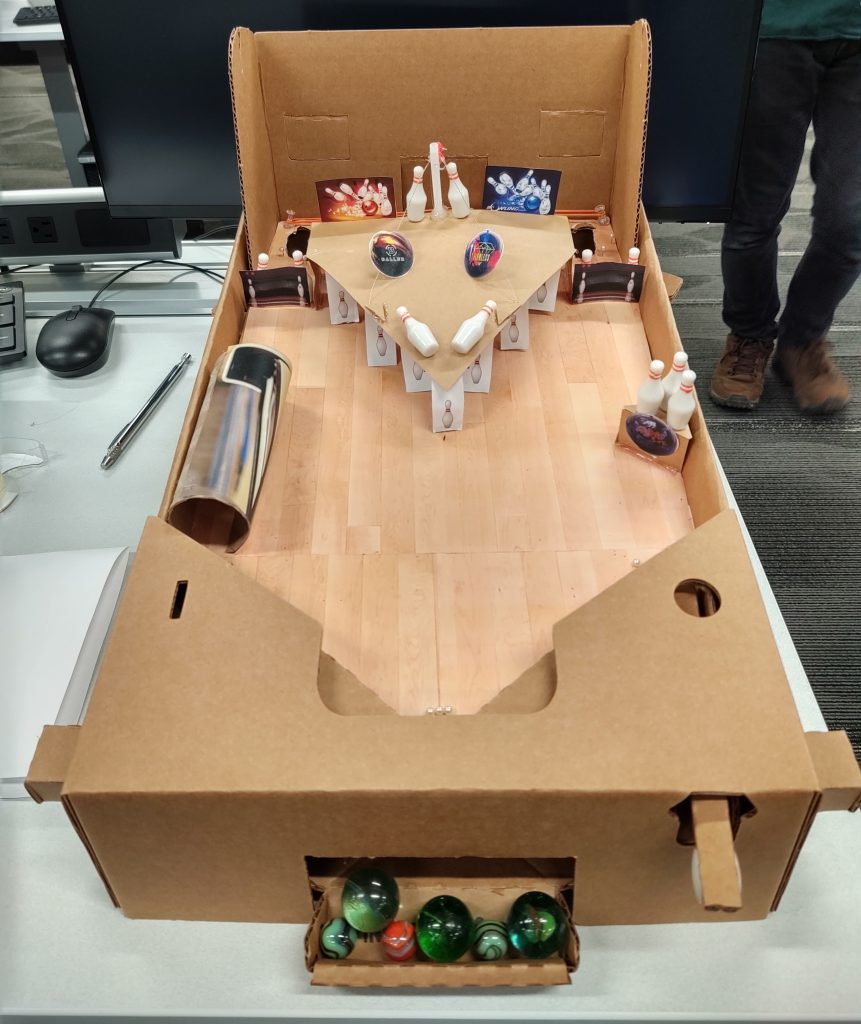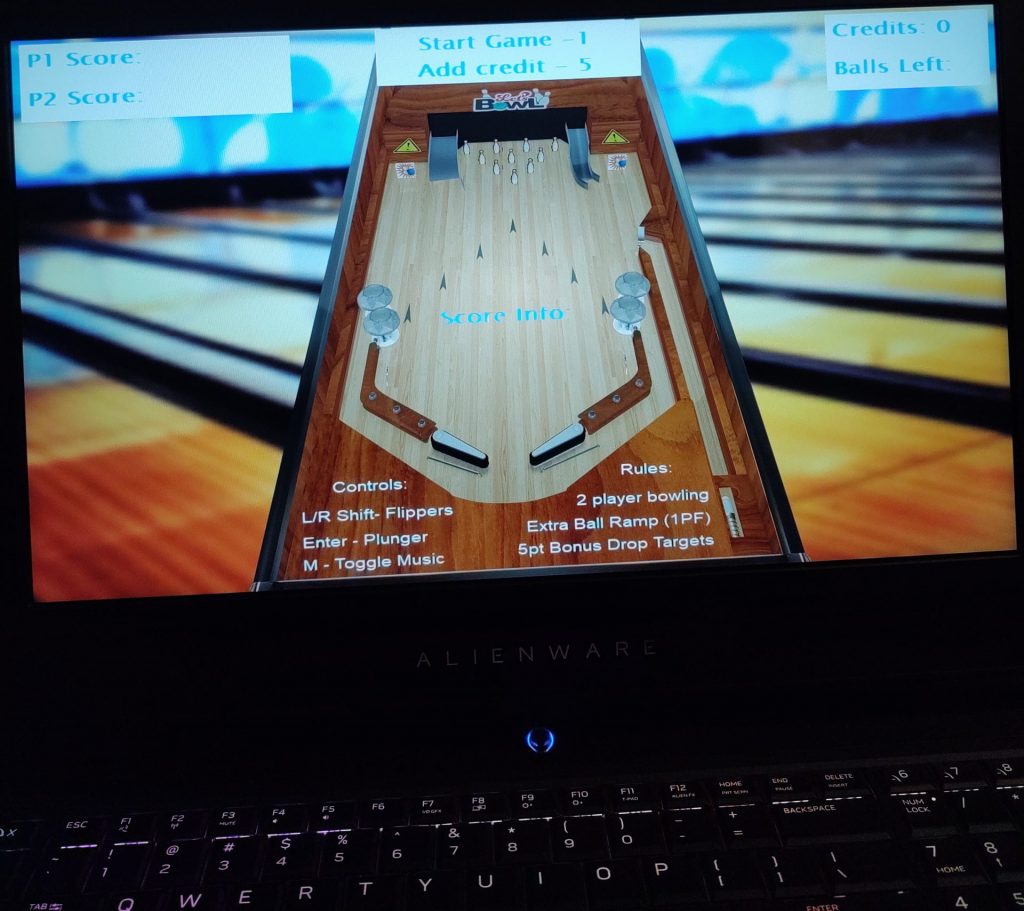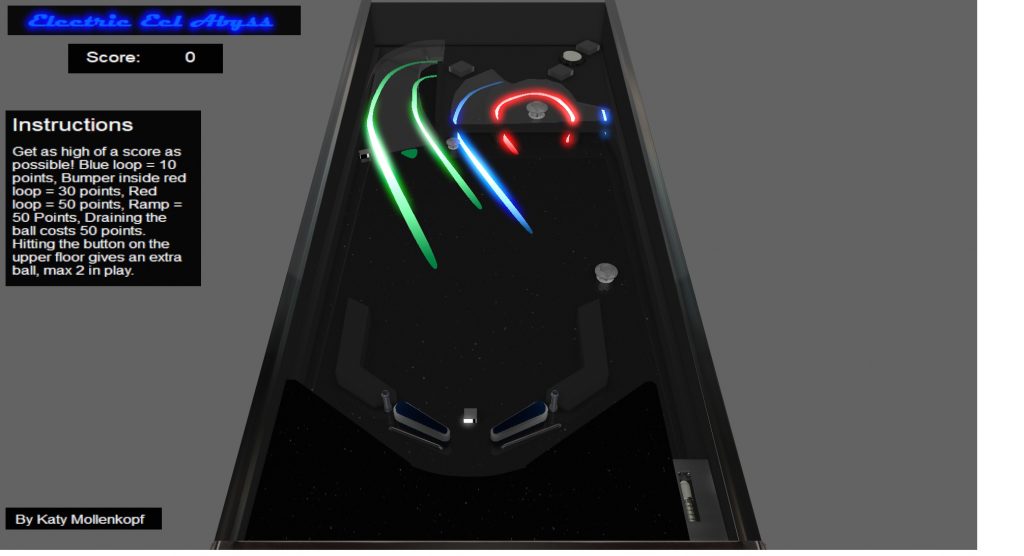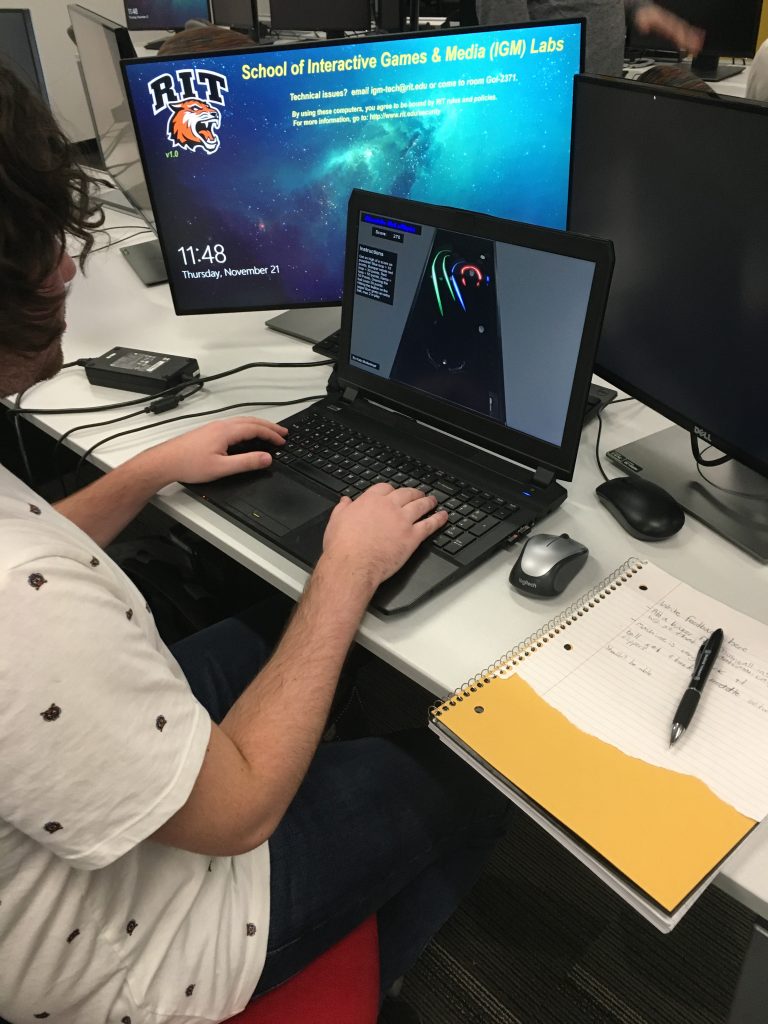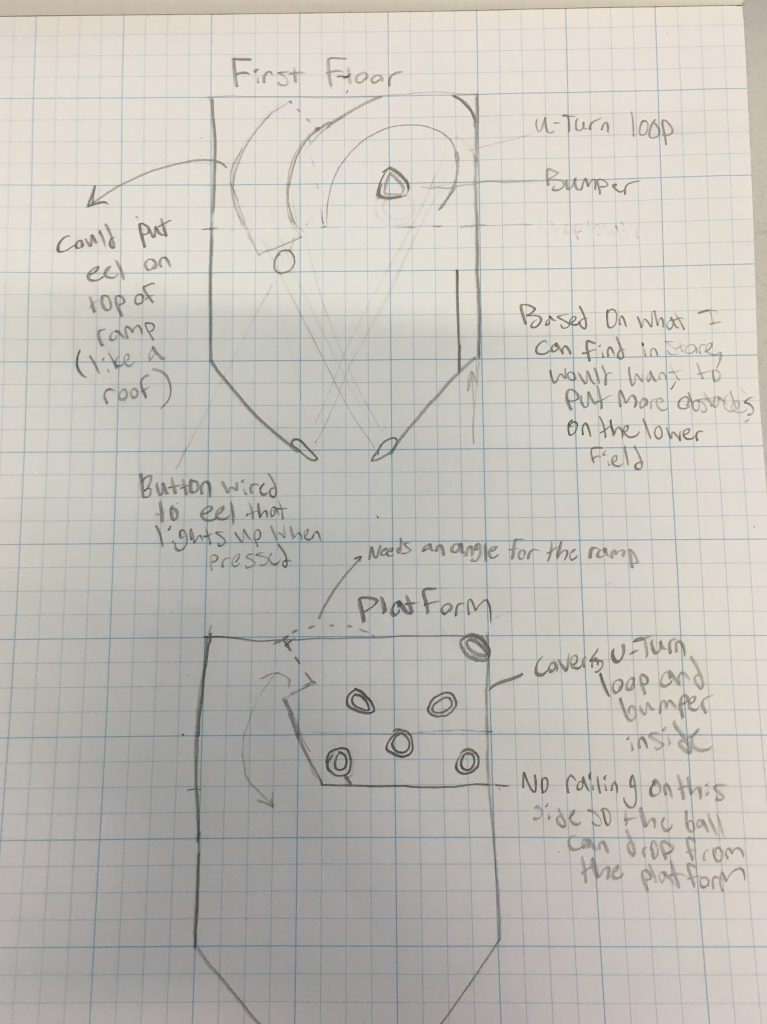So, now I have just come back from playtesting the first iteration of my Hendrix pinball machine. It had three ramps, 2 being somewhat identical with a few differences just to be able to fit on the machine, and one ramp that swooped from one side to the other, along the back of the board. It also had a few different bumpers splattered around the board.
Overall, I don’t this machine captured what I was looking for. It had music, and the visual design people seemed to enjoy, and even the ramps people said felt okay. However, I don’t think it was really as successful as the original physical machine. I attribute this to poor mechanical design on my part, there were a few flaws on the board. The first being the bumpers that I had placed, they felt random and were simply not enjoyable. Moving forward for the second iteration of the machine, I will try to be more purposeful with my placements.
The part that was relatively successful was the swooping ramps that the machine contained. The feedback for them was that the amount of points given to them seemed fair, and that they felt relatively fun to use. The only issue was some clipping that the back ramp had, which I didn’t realize until people began playtesting, as it felt normal to me, and I didn’t give it the attention it needed.
Moving forward, I know that while three ramps was cool, I need to use less ramps, and add more variety to the field. I plan on doing this through adding more than just bumpers, as well as, like I said, having more thought put into where I place the bumpers rather than the random placement that I had used previously.
I think with more work, this machine can be quite fun, but I need to really hone in on the feeling of crazy guitar solos, by using parts of his solos within the machine as part of sound effects.

